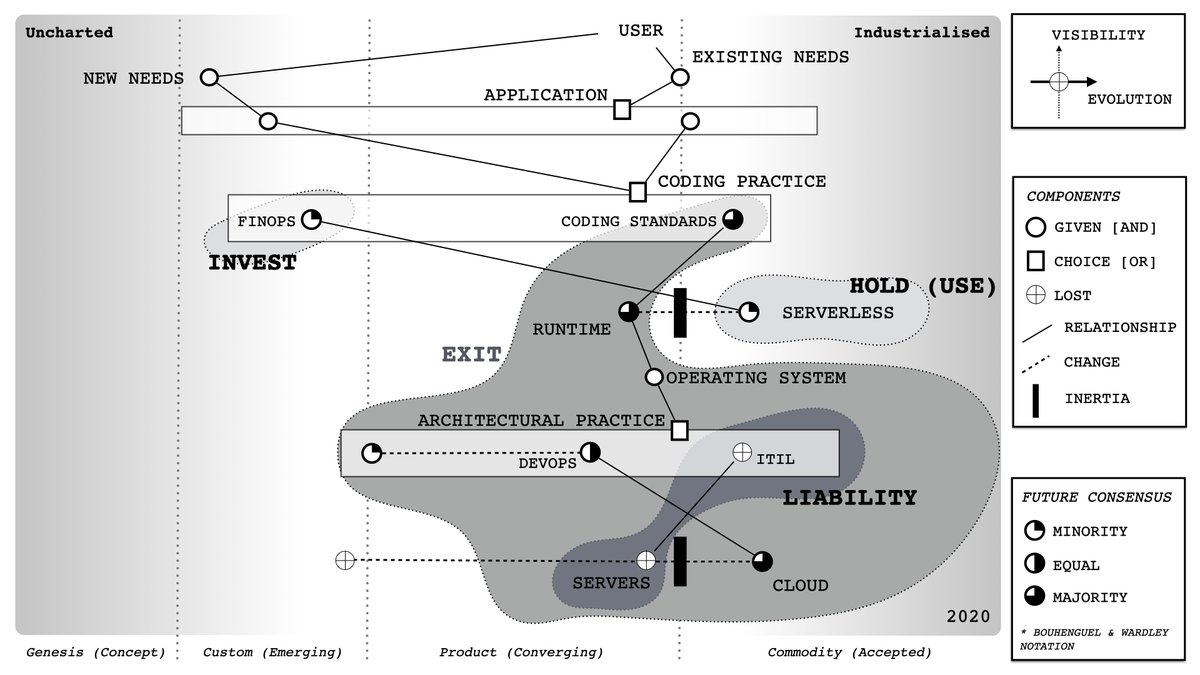X : So, mapping is evolving?
Me : My form of mapping is. I'm constantly looking for better ways to represent the landscape. Some experiments succeed, most fail.
Me : My form of mapping is. I'm constantly looking for better ways to represent the landscape. Some experiments succeed, most fail.

Me : It's a constant trade-off between consistency, communication and usefulness. It's quite easy in these early stages to formalise the system to a point that it isn't useful to many.
X : Isn't FinOps or best coding practice a choice?
Me : Sure, but that's not the point. We could take the map and represent like this ...
Me : Sure, but that's not the point. We could take the map and represent like this ...

... or like this ...
There is a constant trade-off between consistency, communication and usefulness.
There is a constant trade-off between consistency, communication and usefulness.

X : So, what's the ideal trade-off?
Me : I've no idea, that's why I'm constantly exploring to find other ways of representing the landscape,
X : How do you do that?
Me : By asking the question - "Is this more useful than that?"
Me : I've no idea, that's why I'm constantly exploring to find other ways of representing the landscape,
X : How do you do that?
Me : By asking the question - "Is this more useful than that?"
X : I like the one without the axis.
Me : Hmmm, some do, most don't. The axes provides scaffolding and less "noise".

Me : Hmmm, some do, most don't. The axes provides scaffolding and less "noise".


X : But things aren't as explicit.
Me : True but that's the whole point. It's a trade-off. Take the two extremes, one requires a deeper level of understanding, the other has many hidden concepts but is easier to explain relying more on additional story telling.

Me : True but that's the whole point. It's a trade-off. Take the two extremes, one requires a deeper level of understanding, the other has many hidden concepts but is easier to explain relying more on additional story telling.


X : Which one do you prefer?
Me : Irrelevant as this is a community. I prefer to make the implicit more explicit where possible. Hence, this version. But it scares off most people (and with good reason because it's exposing a lot) and so I tend to stick with simple.
Me : Irrelevant as this is a community. I prefer to make the implicit more explicit where possible. Hence, this version. But it scares off most people (and with good reason because it's exposing a lot) and so I tend to stick with simple.

Me : A lot of value can be gained from simple maps, hence as much as the beast of standardisation raises its head within me and argues for repeatability / reproducibility ... I beat it down with the argument that the ideal is the enemy of inclusion.
Imperfection is your friend.
Imperfection is your friend.

• • •
Missing some Tweet in this thread? You can try to
force a refresh









